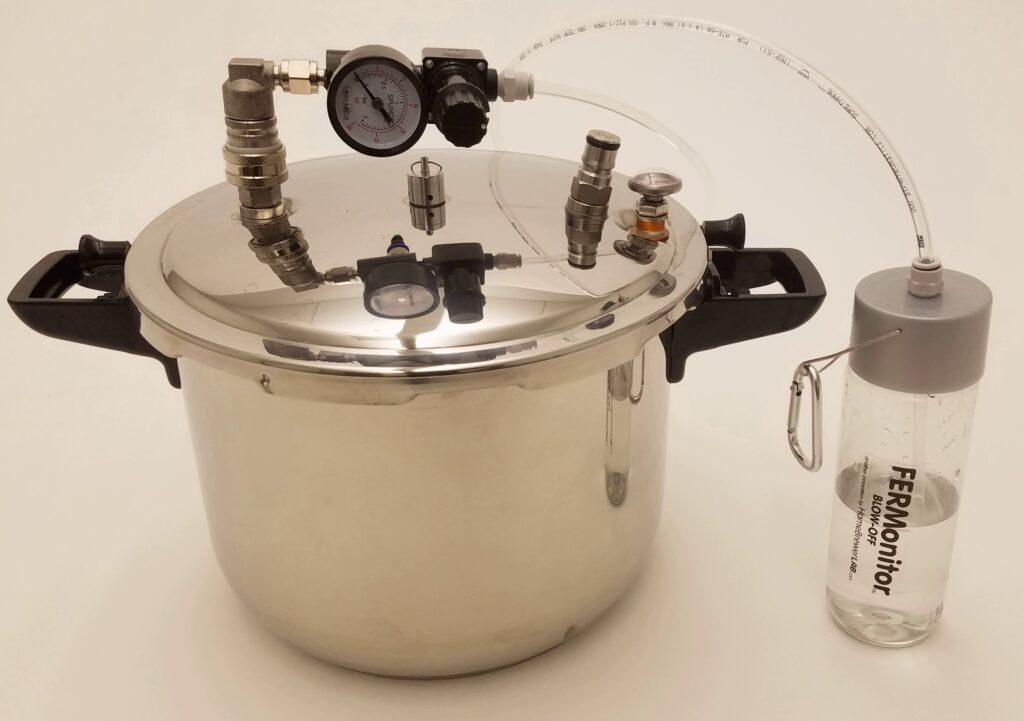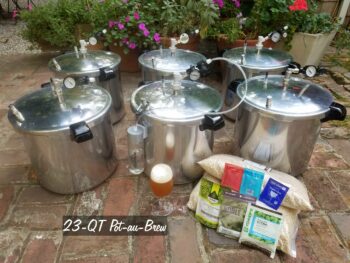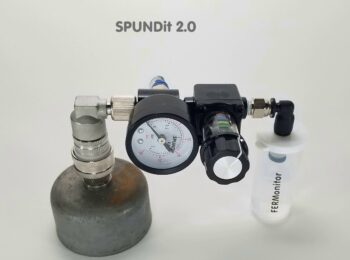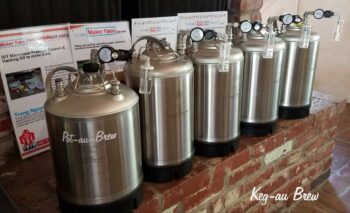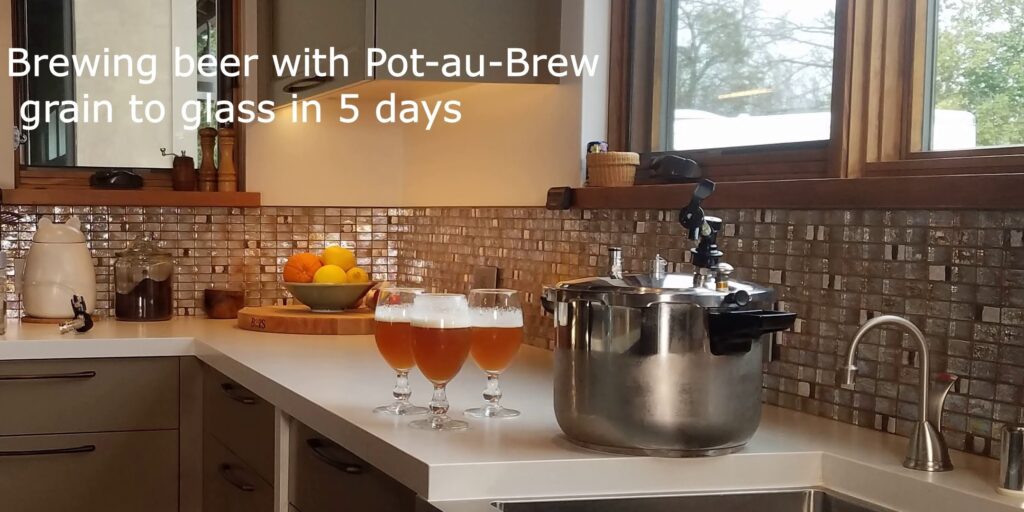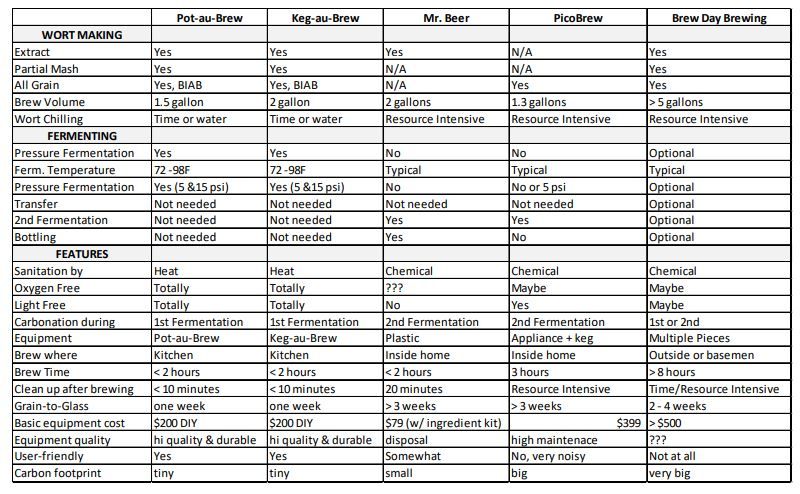
The STOPLit Method of Homebrewing
The article is by Trong Nguyen. Trong is an Inventor, Maker and Brewer. Trong runs Homebrewer LAB, is the inventor of the SPUNDit, FLOTit and more available on eBay
Notes from HBF:
Trong outlines some techniques to quickly and easily homebrew using generally inexpensive materials. This technique relies on some gear that he’s invented. This post includes goals, an explanation of the process and general step by step for different brewing techniques. This post is actually a Homebrew Con proposal. Look for a direct to the homebrewer update soon.
This is Trong’s process. I have not tried these techniques. Make sure the components you use are compatible and rated for your intended application. Contact manufacturer with questions about suitability or a specific application. Always read and follow manufacturer directions.
- SPUNDit 2.0 on eBay
- FLOTit Floating Dip Tube on eBay
- Trong’s Complete Lineup of Gear
- Build a Spunding Valve! – How and Why
The STOPLit Method of Homebrewing
Learn to brew great beer in your own kitchen using a modified pressure cooker and existing home appliances. In this presentation, you will learn the concept of STOPLit brewing where the controls of Sanitation, Temperature, Oxygen, Pressure and Light are built in the process and the use of water, energy, storage, and time to brew and clean up are much less. STOPLit brewing is a fun learning opportunity for the whole family about science, biology, physics and the joy of flavors and tastes.
The Philosophy
We designed STOPLit brewing expressly for beer lovers who are never brewers and ex-brewers by addressing the following key features:
- It must be simple and easy and yet flexible for different brewing levels.
- It must only use one main piece of brewware that is versatile and durable.
- It must be affordable — utilizes existing kitchen appliances for every brewing step.
- It must be user-friendly – easy to clean, not too heavy, not too techy.
- It must be eco-friendly – minimum uses of water, energy, chemical, and space.
- It must offer endless learning, innovating, and teaching opportunities for the users.
- And since it is for beer lovers, it must produce great beer, fast and cheap.
- STOPLit is also great for brewing hard cider, hard seltzer, kombucha, nitro cold brew coffee as well as carbonating water, juices, and wine with the free fermenting CO2.
STOPLit Goals
- It must be easy to brew right in any kitchen using existing home appliances such as:
- The kitchen stove or portable induction cooktop for heating and boiling water.
- The oven is used for mashing with temperature set between 150 – 170°F.
- The home refrigerator is used for cold-crashing and storing finished beer.
- Economical aquarium heater is used to keep a water bath at 68 – 95°F in the winter.
- To accommodate all the above, the brewing must be done in small batches (1 – 2.5 gallons)
utilizing an all-in-one brewware that:- Can be used to boil water.
- Is large enough to hold 2 – 3 gallons of liquid but still fits inside most home oven and
refrigerators. - Hold pressure up to 15 psi for pressure fermentation and serving finished beer.
- Has standard homebrewing components such as ball lock liquid and gas posts and
pressure safety relief valve. - Has a floating dip tube with sufficient filtered inlet to draw clear beer near the surface
when the pot is full and at the yeast cake when it is near empty. - Uses a reliable easy-to-use spunding valve to control internal pressure and to monitor
fermentation progress. - And must be durable and affordable, or people can DIY from available components.
- The brewing method shall:
- Be suitable for all types of brewing – extract, partial mash, or all grain.
- Use BIAB for all grain brewing.
- Offer impeccable sanitation condition at every step.
- Be oxygen-free throughout the process – the wort or beer is never exposed to air.
- Be suitable for having appropriate temperatures for mashing, boiling, fermentation and
serving. - Ferment under precise desired pressure at various stages.
- Not expose the fermenting wort or beer to light.
- Brew most beer from grain to glass in one week.
- Be eco-friendly where the usage of power and water for chilling or cleaning is
minimized. - Take 30 – 90 minutes to brew a batch of beer – NOT brew day!
- Be done in any home kitchen anywhere – NOT garage or basement.
- Be suitable for any recipes.
- Brew great beer for not more than $2/pint.
- Embrace the Circularity Economy principles where all the components
- have long service life.
- can be used for other purposes.
- have good resale values even after many years of service.
The Goods
After toiling in our lab for the last 2 years, we have developed a few of cool “brewware” that
operationally accomplish everything we wanted. They are basic in design and yet fundamentally farmore advanced and sensible than all geeky brewing appliances on the market such as PicoBrew, Brewie,BrewArt, BEERMKR, Brewbot… What we need now is to share what we have created with the world and make homebrewing the new homebaking. Here are what we made and how we did it.
Pot-au-Brew
An all-in-one brewware hacked from a familiar 8-quart Presto stainless steel pressure cooker.
We incorporated a gas and a liquid ball lock post, a safety PRV, a thermowell, a floating filtered
dip tube, a spunding valve and a FERMonitor. Being a pressure cooker, it can hold pressure up to15 psi and can brew up to 6-quart of wort under pressure to suppress krausen even with limited headspace.
- The spunding valve used a custom US-made Airtrol PRV (one of its standard versions is
used in GE ventilators for treating COVID-19 patients). We named it SPUNDit 2.0 and
sold most what we produced outside the US on eBay. - The floating filtered dip tube has a unique double (300 & 500 micron) filter, designed to
land at specific position when the beer level is almost empty so the Pot-au-Brew can be
tilted to pool and draw all remaining beer. - The FERMonitor is like an airlock and used to set the pressure gauge and to monitor the
fermentation progress by its bubbling activities.
Keg-au-Brew
Made from a custom Cornelius 3-gallon keg. It is wider and shorter and has 3 posts – one for
liquid, one for gas and one for a thermowell or future brew gadget. The lid has a 1” Torpedo
port for pitching yeast or dry hopping without having to remove the lid for convenience and
avoiding contamination. The Keg-au-Brew also has a floating filtered inlet, the SPUNDit 2.0
spunding valve and the FERMonitor.
Related: Keg Deals!
kegdealsFunctionally, the Keg-au-Brew is similar to the Pot-au-Brew except it cannot be used to produce
wort. So, a typical 3-gallon or larger stock pot is need for that and the boiling wort is poured into
it for chilling and fermenting.
CO2 BioGenerator
When we make beer, we need CO2. Even with pressure fermentation, the beer is only partially
carbonated when it is ready for cold crashing. So, supplemental CO2 is needed to maintain 12 –
15 PSI for proper carbonation and drafting. CO2 itself is not terribly expensive, but it is
inconvenient to get and the cylinder and the regulator are not cheap. For these reasons, we
developed a biogenerator to produce all the CO2 a homebrewer needs and then enjoys great
hard cider at the end.
Basically, it is a 3 or 5-gallon keg with a floating dip tube and a custom low-pressure regulator
that only requires 1 -150 PSI supply pressure to deliver 1 – 15 PSI service pressure. The CO2 is
produced by fermentation of 1.5 or 2.5 gallons of apple juice, sugar, yeast food and Kveik
Hornindal yeast. The maximum pressure produced is around 100 PSI which is sufficient for coldcrashing and drafting 3 batches of beer. At the end of the run, when the pressure drops to 10 PSI, the keg is chilled for 24 hours, the high Octane (14% ABV) hard cider is surprisingly sweet
(high pressure suppresses the yeast activities, leaving more residual sugar than otherwise – an
interesting discovery!) and delicious. The entire set up will cost about $200. But we can make
beer anywhere – far away from a CO2 supply house.
The Process
The 3 main steps of the brewing process – wort making, fermentation and conditioning/serving are briefly described below:
Wort Making
Extract, Mr. Beer kit or similar:
- Pot-au-Brew. Boil water in Pot-au-Brew, add extract to dissolve, add hops, boil until
done, close lid and allow to cool naturally or set in a water bath. - Keg-au-Brew. Boil water in a suitable stock pot, add extract to dissolve, add hops, boil
until done and carefully pour into the Keg-au-Brew while the wort is boiling hot to
sterilize everything. Close the keg lid and allow to cool naturally or set in a water bath.
Partial Mash:
- Pot-au-Brew. Boil water in Pot-au-Brew to mashing temperature, steep specialty grains
for 20 minutes, remove the grain bag and bring to a boil, add extract to dissolve, add
hops, boil until done, close lid and allow to cool naturally or set in a water bath. - Keg-au-Brew. Boil water in a suitable stock pot to mashing temperature, steep specialty
grains for 20 minutes, remove the grain bag and bring to a boil, add extract to dissolve,
add hops, boil until done and carefully pour into the Keg-au-Brew while the wort is
boiling hot to sterilize everything. Close the keg lid and allow to cool naturally or set in a
water bath.
All Grain:
- Pot-au-Brew. Boil water in Pot-au-Brew to mashing temperature, add BIAB grain bag,
place Pot-au-Brew in an oven set at 160°F for about one hour. While waiting, use
another pot to boil enough water to rinse the grain bag. Remove the BIAB grain bag
from Pot-au-Brew and submerge it into the second pot to rinse out more sugar. Pour
the rinsed wort into the Pot-au-Brew and bring to a boil, add hops, boil until done, close
lid and allow to cool naturally or set in a water bath. - Keg-au-Brew. Boil water in the first stock pot to mashing temperature, add BIAB grain
bag, place this pot in an oven set at 160°F for about one hour. While waiting, use
another pot to boil enough water to rinse the grain bag. Remove the BIAB grain bag
from the first pot and submerge it into the second pot to rinse out more sugar. Pour the
rinsed wort into the first pot and bring to a boil, add hops, boil until done. Carefully pour
the resulting boiling wort into the Keg-au-Brew, close lid and allow to cool naturally or
set in a water bath.
Fermentation
The fermentation process is the same for both Pot-au-Brew and Keg-au-Brew.
- As the wort cooled down in the sealed brewware, a vacuum is developed. Pull the safety PRV ring to de-vacuum.
- Open the lid and stir the wort vigorously with a long sanitized spoon for a few minutes to
oxygenate the wort. Another option is injecting pure oxygen through the liquid post. - Pitch Kveik yeast.
- Connect SPUNDit to the gas post and set the pressure at the green color bar (5 psi) and attach the FERMonitor to outlet port of SPUNDit.
- On day 3, release the pressure slowly with SPUNDit to avoid excessive foaming.
- Open the lid to dry hop – if done quickly, none, or very little air would enter as the head space has positive pressure of CO2 released from the fermenting wort.
- Close the lid and set pressure to yellow color bar (15 psi).
- About day 4 or when the bubbling in the FERMonitor is slowed to one bubble every 1/2 second.
- Turn the pressure setting on SPUNDit to blue bar (22 psi).
- About day 6 or when the bubbling in the FERMonitor is at one bubble every 5 or more seconds, the beer is done and ready for cold crashing.
Cold Crash and serving
- Removing SPUNDit/FERMonitor from the brewware and place it inside a refrigerator to cold
crash for 24 hours. Add more CO2 to maintain pressure at 15 PSI during cold crashing. - Connect a picnic tap to the liquid post and draw a small amount to discard as it may have hop bits and taste bitter. Draw another sample and enjoy. The beer will taste better after a few more days, but very drinkable at this time.
- If the beer is consumed within 2 weeks, it can stay on the yeast cake. Or it can be close transferred to a small serving keg and the yeast cake can be used to ferment another batch of wort to finish in about 3 – 4 days.
Comparing STOPlit to Other Techniques & Equipment
Summary
After teaching many new homebrew enthusiasts in Sacramento, CA, we are eager to share this brewing process with broader audience. Our students, most of them are either former homebrewers who had not brewed in years (ex-brewers) and millennials who never brewed before (never brewers), really enjoy making beer and hard cider this way. They are always surprised how easy it is – particularly the exbrewers. We made presentations at the Bay Area and other Northern California Maker Faires and received tremendous enthusiasm. We were invited to demo this concept at Keg King and Monash University in Melbourne, AU and University of Dallas, Rome, IT campus in 2019 where we had to create the CO2 generator for the occasion because it was so difficult to get CO2 there.
- SPUNDit 2.0 on eBay
- FLOTit Floating Dip Tube on eBay
- Trong’s Complete Lineup of Gear
- Build a Spunding Valve! – How and Why
Photos and Videos
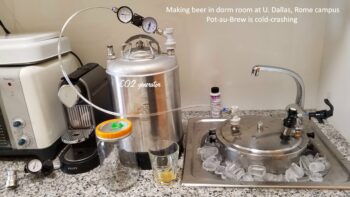 Dorm brewing
Dorm brewing Dorm brewing
Dorm brewing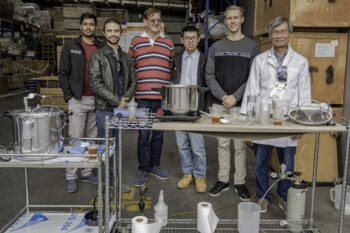 Trong at Keg King
Trong at Keg King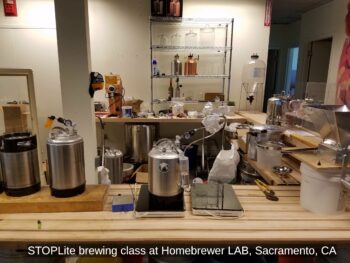 StopLit Brewing Class
StopLit Brewing Class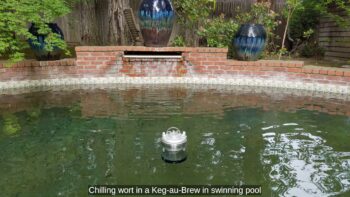 Pool Chilling
Pool Chilling
Video Player
00:00
00:00
Pot-au-Brew with Picnic Tap 2.0
Video Player
00:00
00:00
STOPLite brewing with Pot-au-Brew & hot plate
pinnedThis post may contain affiliate links. We may make a commission when you use our links. This will never cost you extra. Thank you for supporting Homebrew Finds!
greatdealsMake sure the components you use are compatible and rated for your intended application. Contact manufacturer with questions about suitability or a specific application. Always read and follow manufacturer directions. top:stoplit tag:tpr
